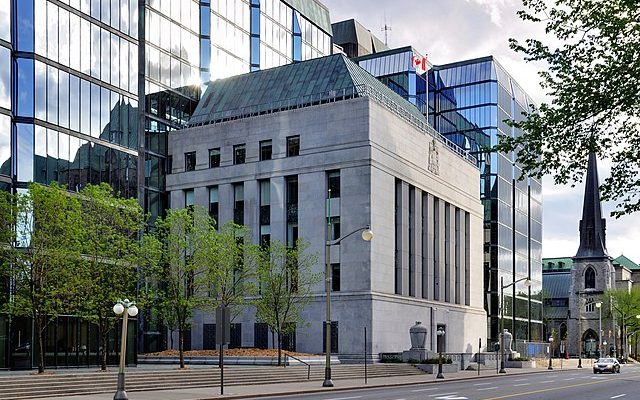With the global economy continuing to expand, the Bank of Canada cut its key interest rate Wed from 4.25 per cent to 3.75 percent.
This fourth rate cut in a row of half a percentage point by the central bank points to a drop in inflation from 2.7 percent in June to 1.6 percent in Sept.
“We took a bigger step today because inflation is now back to the 2 per cent target and we want to keep it close to the target,” Governor of the Bank of Canada Tiff Macklem has said in a statement.
The inflation expected by the central bank to stay around 2 percent in Oct as its surveys suggest business and consumer expectations of inflation have shifted downward and are approaching normal levels.
“I think Canadians can breathe, breathe a sigh of relief,” said Macklem, acknowledging that Canadians have been struggling under the weight of high inflation.
Senior Deputy Governor of the Central Bank Carolyn Rogers underscored that point when pressed how despite this fourth straight rate cut Canadians aren’t feeling like their finances are doing better.
“It means that prices aren’t going to keep going up, but every time you go to the grocery store, I’m sure you’re feeling that fact that prices have come up,” Rogers has said, adding after only a little while Canadians would feel the effects of the price of food, rent and housing stabilize.
The decline in inflation over the last few months, said Macklem, reflects the combined effects of lower oil prices, lower shelter price inflation in Canada and lower prices for several consumer goods like cars and clothes.
Provided the trend continues, more interest rate cuts, said Macklem, can be expected in the future.
Even before the rate cut was announced, Canada’s Finance Minister and Deputy Prime Minister Chrystia Freeland pointed to the positive economic numbers while speaking to reporters.
“The IMF (International Monetary Fund) published today its World Economic Outlook, and in that outlook, Canada is forecast by the IMF to have the strongest economic growth in the G7 in 2025. There is a lot more we need to do. But on the macroeconomic front, we’re seeing some solid progress,” said Freeland.
With growth in the United States expected to be stronger than previously forecast, the Bank of Canada expects over the next two years the global economy to expand at a rate of about 3 percent .
“Household spending and business investment have picked up this year, but remain soft,” Macklem told reporters.
With the easing of financial conditions across the world, the central bank notes, and global oil prices are about ten dollars lower than predicted in the July monetary policy report.
Opening of the Trans Mountain Expansion pipeline has further boosted exports in Canada.
According to the bank, the Canadian economy grew by around 2 percent in the first half of the year and is expected to grow by 1.75 percent in the second half of 2024.
But the Canadian labour market remains soft, the central bank notes, due to a hike in the unemployment rate to 6.5 percent in Sept, a full percentage point higher year over year.
“Business hiring has been weak, which has particularly affected young people and newcomers to Canada,” said Macklem, adding the number of workers has increased faster than the number of jobs.
As a result of lower interest rates, the bank expects the Gross domestic product (GDP) growth to gradually strengthen to about 2 percent in 2025 and 2.25 percent in 2026.





